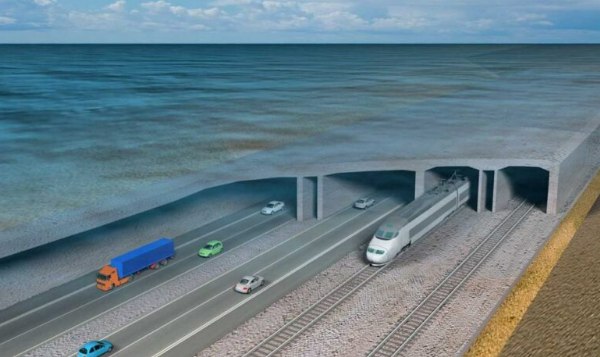India’s first underwater road-rail tunnels to be built across Brahmaputra
The tunnels which will be used for both civilian and strategic purposes, will take off from about 9 km upstream of the existing Kaliabhomora (Tezpur) road bridge.
Total Views |
India is setting new records in many fields, and one of the prominent one being infrastructure. New projects are being introduced frequently, and are set for the betterment and progress of the country. One such engineering marvel that India will now be getting are the very first underwater road-cum-rail tunnels across the Brahmaputra River located in the eastern state of Assam.

These tunnels will be built at an estimated cost of Rs 7,000 crore or $902,592. The Railway Ministry and Road Transport Ministry made the announcement, saying that the project is being planned along with the Border Road Organisation (BRO).
What the project includes | 3 parallel tunnels will be built in the project. Out of these, one will be for roadways, the second will be for railways, and the third for the emergency purposes, and each of these tunnels will be inter-connected with a cross passage. As for the length, each tunnel will be around 9.8 km long.
The tunnels, which will be used for both civilian and strategic purposes, will take off from about 9 km upstream of the existing Kaliabhomora (Tezpur) road bridge. This strategic multi-modal transportation system wants to integrate the rail and highway network through the Jamurihat-Silghat axis towards North Assam, Tawang and the rest of Arunachal Pradesh.
According to the minutes of the meeting chaired by the Railway Ministry, "After discussion on the issue, it was decided that since rail-cum-road underwater tunnel alignment is an essential requirement of the Ministry of Defence, the same may be considered further by the Northeast Frontier Railway subject to technical suitability.'' It added, ''However, the cost estimate needs to be revisited by BRO and should be done carefully. The BRO/Road Transport Ministry was also advised to confirm about the funding of the project.''
The project can also be funded by the Defence Ministry to make it an engineering marvel and also benefit the country.
Also Read | The Strategic Importance of the Sela Tunnel
Previously, a project with an estimated expenditure of Rs 12,800 crore ($1.6 million) was proposed by the National Highways and Infrastructure Development Corporation Limited (NHIDCL), Under the Road Transport Ministry, to build twin tunnels which would only meant for vehicles. According to the estimate, the government would be spending around Rs 12, 800 crores for these tunnels. But according to some reports, the proposal prepared by the BRO and the Road Ministry has helped reduce the likely investment even after adding one more tunnel, to Rs 7000 crores.
The tunnel will take off from about 9 km upstream of the existing Kaliabhomora (Tezpur) road bridge and will connect Jakhlabandha railway station on the south bank and Dhaliabil railway station on the north bank of Brahmaputra.
Also Read | World's longest twin-lane tunnel being built in India at Rs 700 cr; to be completed by year-end
The underwater tunnel project will be an engineering marvel apart from benefitting the country strategically by reducing travel time between Assam and Arunachal Pradesh. Currently, there are 5 bridges across the Brahmaputra. The proposed tunnels will be constructed using tunnel boring machines and may take around 2 to 2-and-a-half years to complete.
Each tunnel will have two lanes for smooth flow of traffic and will be built 22 metres below the river bed. The total length of the project will be 33 km. Due to its strategic importance, the project has already been endorsed by the Directorate of Military Operations. India has been raising its level of road infrastructure along the borders, including in the Northeast regions, to counter any challenge from neighbouring countries like China.